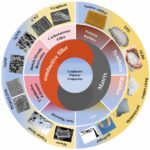 Let’s dive into the world of green hydrogen, a clean and zero-emission fuel that’s making waves in the renewable energy sector. Produced by splitting water into hydrogen and oxygen using electricity from renewable sources, green hydrogen is gaining recognition as a pivotal player in the shift away from fossil fuels. As we strive for sustainable energy solutions, green hydrogen’s ability to store and transport renewable electricity uniquely positions it as an environmentally friendly option.
Let’s dive into the world of green hydrogen, a clean and zero-emission fuel that’s making waves in the renewable energy sector. Produced by splitting water into hydrogen and oxygen using electricity from renewable sources, green hydrogen is gaining recognition as a pivotal player in the shift away from fossil fuels. As we strive for sustainable energy solutions, green hydrogen’s ability to store and transport renewable electricity uniquely positions it as an environmentally friendly option.
Jack Shaw, a seasoned writer and editor at Modded, explores the fascinating processes behind green hydrogen production. He breaks down the nuances of electrolysis and the hurdles of scaling this promising technology. Green hydrogen is generated through water electrolysis, powered by renewable energy sources like wind, solar, and hydropower. Unlike hydrogen derived from fossil fuels, its production results in zero direct emissions, making it a sustainable alternative for sectors that are tough to electrify, such as long-haul transport and energy storage.
The versatility of green hydrogen allows it to store excess renewable energy, tackling the challenges associated with the intermittent nature of wind and solar power. The electrolysis process involves splitting water molecules into hydrogen and oxygen using an electric current, facilitated by an electrolyte, which is usually a dilute acid or base. The type of electrolyser used—be it alkaline, proton exchange membrane, or solid oxide—can significantly impact the efficiency and cost of hydrogen production. Each technology has its own set of benefits and challenges, but they all rely on the availability of low-cost renewable electricity.
Integrating renewable energy into the electrolysis process is key to ensuring the environmental benefits of green hydrogen. However, the variable nature of solar and wind energy can complicate this integration. Solutions like battery systems or generating excess renewable energy during peak production times help maintain a steady electricity supply for electrolysis. As renewable energy costs continue to drop, advancements in energy storage and grid integration are becoming crucial for the economic viability of green hydrogen.
Electrolysis requires a consistent supply of high-quality water, with deionised or purified water yielding the best results. While seawater can be used, it requires desalination, which adds complexity and cost. In regions where water is scarce, sustainable water supply solutions are essential. Innovations like using brine from desalination or improving recycling methods are emerging to balance water use with environmental concerns.
Once produced, green hydrogen needs to be compressed, stored, and transported. This low-density gas is typically compressed to 700 bar for storage in tanks, underground caverns, or as liquified hydrogen. Transport options include pipelines, trucks, or ships, with ammonia emerging as a viable alternative for easier storage and conversion back to hydrogen. The infrastructure for hydrogen storage and transport is still evolving, with scalability being crucial for widespread adoption.
Expanding green hydrogen production faces challenges related to cost, efficiency, and infrastructure. Currently, it’s more expensive than hydrogen derived from fossil fuels, so reducing costs in electrolysers and renewable electricity is essential. Innovations in electrolyser technology, cheaper materials, and enhanced renewable energy integration are key areas of focus. As investments in hydrogen infrastructure, including pipelines and storage systems, increase, the path towards a global green hydrogen economy becomes clearer.
Green hydrogen holds the promise of a sustainable transformation across various industries, including steel production, chemicals, and aviation. With ongoing innovation and decreasing costs, it stands poised to play a crucial role in meeting global sustainability goals. The humble hydrogen atom may very well be at the heart of our clean energy future, driving progress towards a greener world.








